
17 Jan Western Landmark: Celebration of Place
Observing its 10th anniversary in 2019, the Allison Inn & Spa, an 85-room destination resort in Newberg, Oregon, just southwest of Portland, displays 500-plus original works by more than 100 Oregonian artists, featuring paintings in many styles, photography, ceramics, fiber art, and sculpture. The LEED Gold-certified hotel includes an award-winning spa and a 100-seat restaurant, JORY, whose name honors the glacier-deposited soil that has made the Willamette Valley in Yamhill County world famous for pinot noir and other varietals.
“The Allison’s inspiration is based on the beauty and bounty of Oregon, which can only happen here because of the soil,” says Loni Parrish, the daughter of the hotel’s founder, the late Joan Austin, whose husband’s family homesteaded nearby seven generations ago. First settled by fur traders, the area is now a state park.
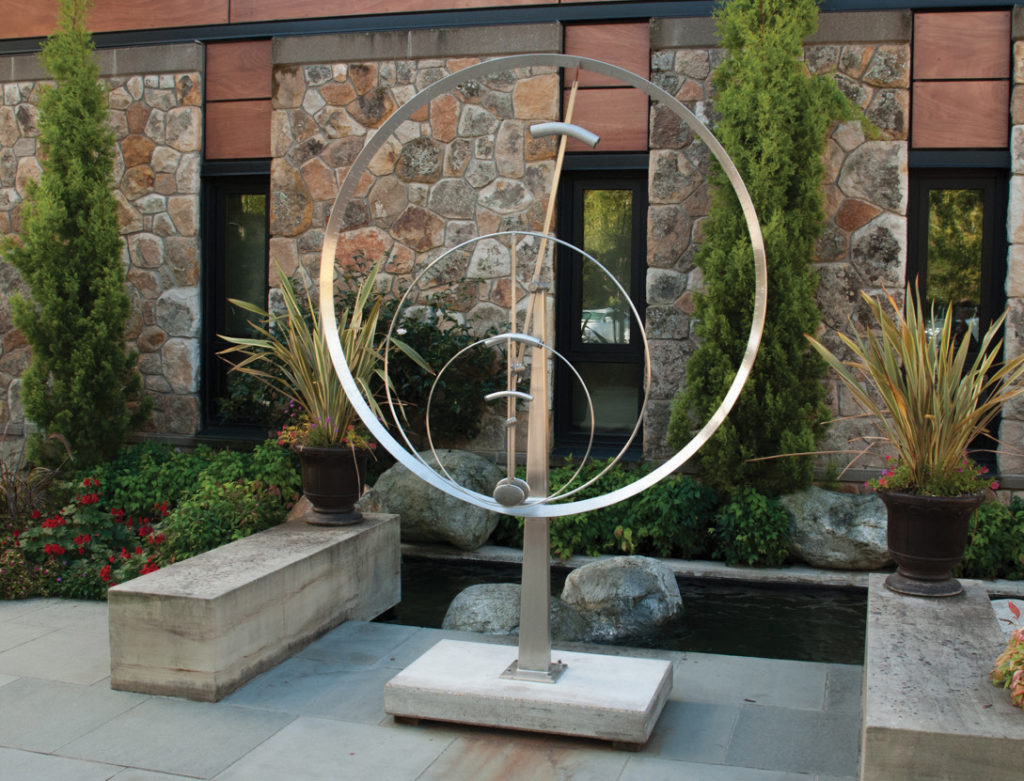
Artist Don MacLane’s kinetic and interactive sculpture is inspired by his love for geometry, tools, old scientific instruments, machines, and the art of indigenous cultures of the Northwest Coast. Photo courtesy of Art Elements Gallery
The Allison acts as a luxury gateway to the area’s many vineyards. The resort occupies 35 hillside acres, with views of Parrett Mountain, the Chehalem Mountains, and the Dundee Hills. Flower and herb gardens, deciduous and conifer trees, and seven acres of pinot noir and pinot gris vines connect the campus with its location.
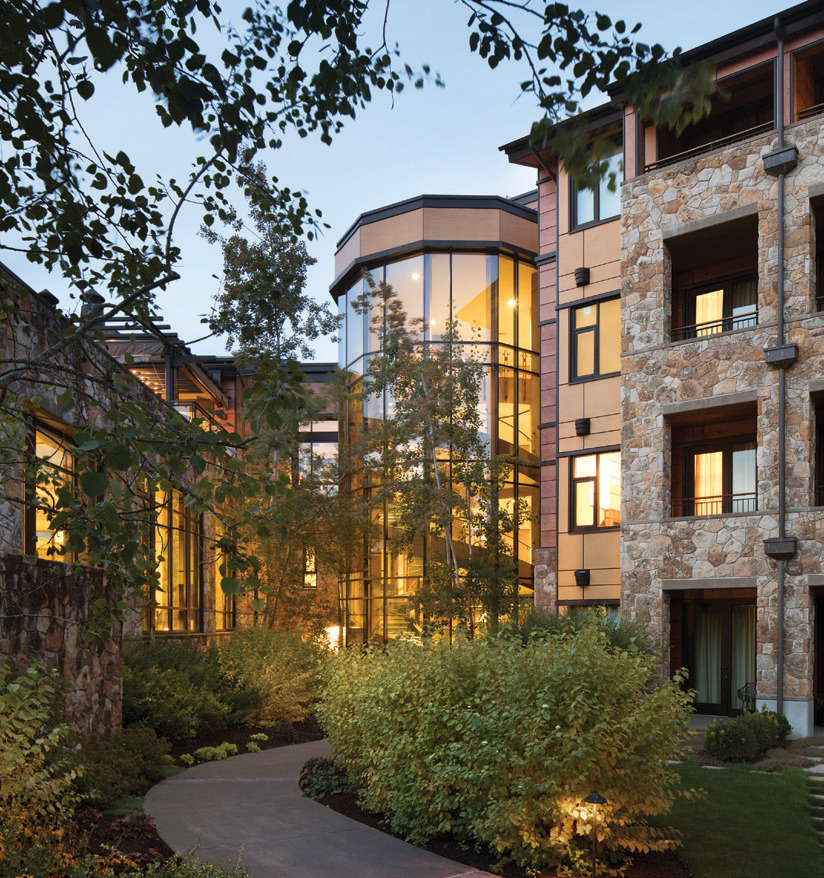
The Allison’s exterior finishes include polished wood, copper accents, glass, steel, and stone.
Curated by Parrish, an artist and the owner of a gallery, the resort’s collection began in 2008 and today includes about a dozen commissioned works. Each year, new pieces by Oregon artists are added, such as outside garden sculptures.
Among the artworks at the Allison are Timeless Flight by fused-glass pioneer Gil Reynolds; two soil-based artworks, Slackwater Terroir and Glacial Meltwater, by Jay Noller; andFamily Farm, a painting of the founder’s early homestead, by Romona Youngquist. Commissioned pieces include Jackie McCartin’s lavender diptychs; Carmen Reynolds’ glass panels; Tangie Pape Belmore’s concrete, silk, and acrylic paintings; James Frey’s abstract landscapes; and Lori Latham’s acrylic paintings.
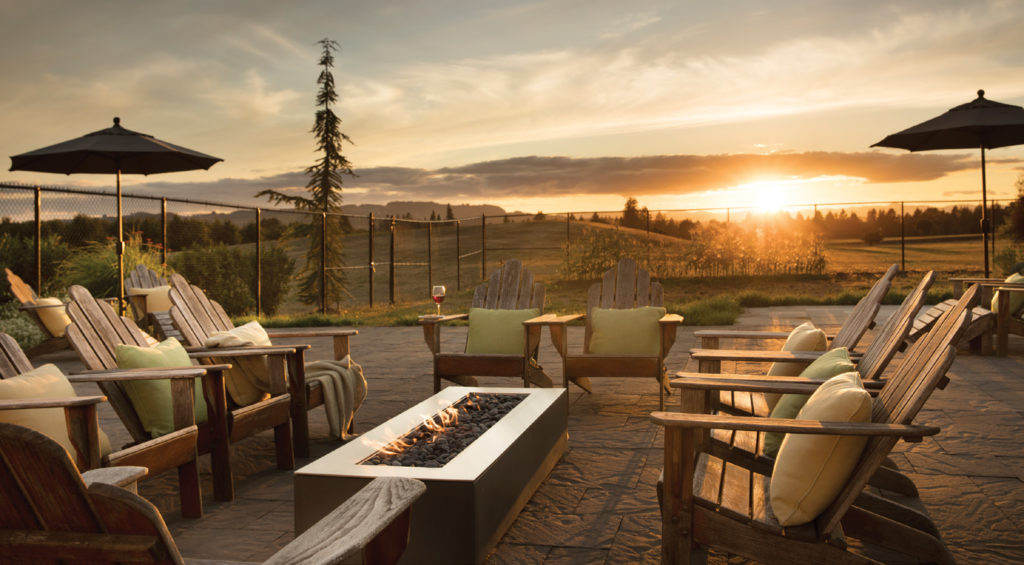
Among the many outdoor features at the Allison Inn is a terrace with a fire pit and expansive vineyard views.
Planning for the collection, titled “Art at the Allison,” started prior to the resort’s opening. “We decided we had to have only original Oregon art because we wanted the Allison to celebrate the many connections it has to the area, so I put out a call to all Oregon artists,” Parrish says. “We held an open house; they met the family, my mother in particular. The Allison was her dream and vision for the Willamette Valley and Oregon.”
A painting by Romona Youngquist, who lives in nearby Dundee, welcomes guests at the resort’s restaurant entrance. “It is from a hand-colored photo from the 1930s, which has been in the family for generations,” explains Parrish. “It represents the variety and vastness of our local agriculture and is, understandably, the most prized piece in the Art at the Allison collection.”
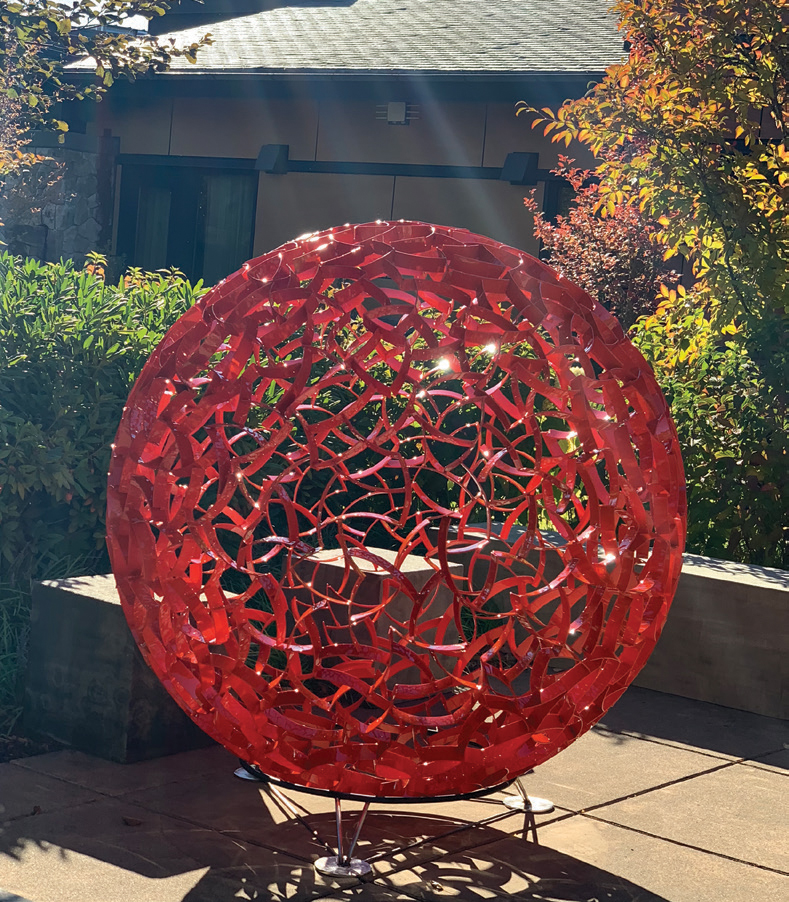
Portland artist Ivan McLean creates unique sculptures, such as this 60-inch-diameter powder-coated sphere. Photo courtesy of the Allison Inn & Spa
Jay Noller, another artist in the collection, is a soil scientist at Oregon State University in Corvallis, where he directs the school’s Global Hemp Innovation Center. Noller’s two commissioned soil panels are in the swimming pool and hot tub area, and the hotel also showcases his Otter Rock in the private dining room. His artworks depict centuries of the area’s geological history. More than 15,000 years ago, Glacial Lake Missoula burst and the waters carried the nutrient-rich topsoil from what are now surrounding states. Bolstered by subsequent floods, Lake Allison formed, covering the area where the hotel is today. When the lake subsided, the unusually rich and fertile Jory soil became the superlative floodplain for the area’s vinicultural excellence. “I paint portraits of soil. I use soil in some artworks; some use acrylic. They are research tools in the study of how the earth’s surface weathers,” says Noller.
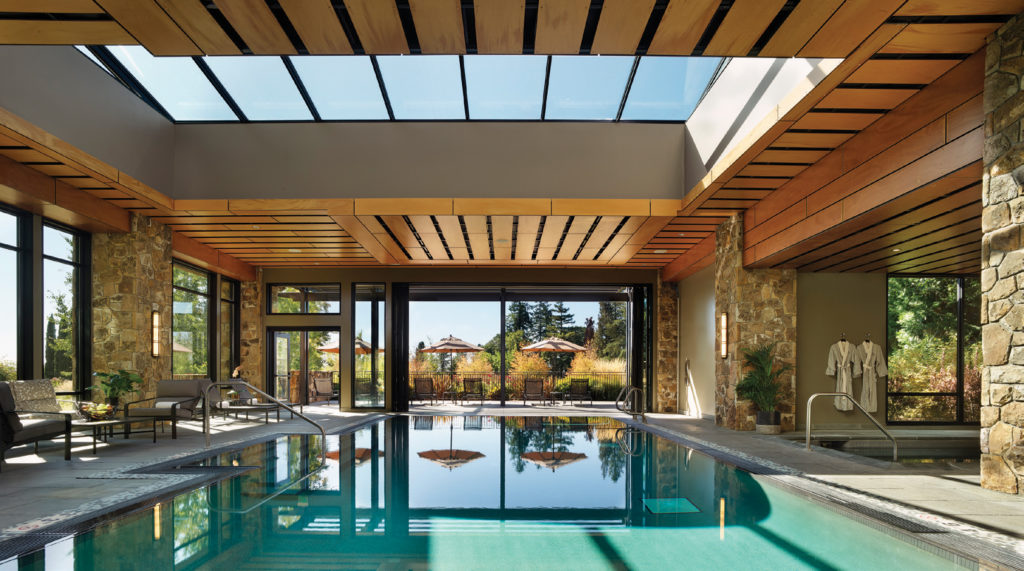
The resort’s indoor swimming pool has folding floor-to-ceiling glass doors that open to the terrace and gardens in warm weather.
In Slackwater Terroir, for example, Noller incorporates soil pigments and the underlying saprolite rock, all of which were collected during the hotel’s excavation. He mixes these in an acrylic medium. The last of the work’s five geologically accurate panels depicts the site of the Allison today on the ancient lake bed.
Another centerpiece artwork tells a story about the Allison, its terrain, and architecture. Located in the hotel’s restaurant, a fused-glass, aluminum, and wood wall sculpture is a stylized aerial view of the hotel’s three wings. The artist, Gil Reynolds, has created glassworks for more than 40 years and works out of a studio about two miles from the resort.
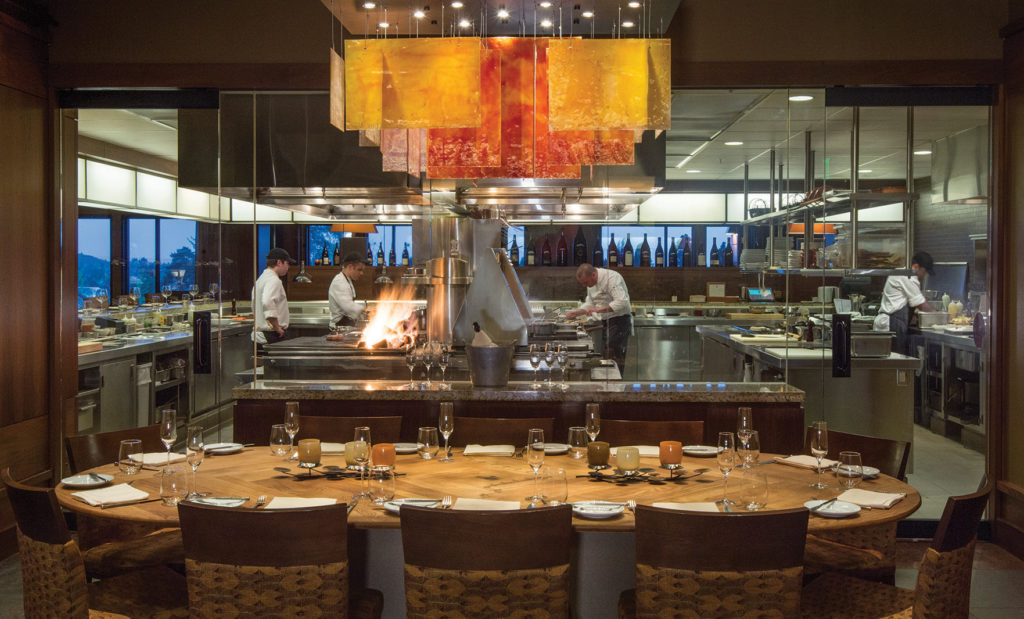
Ken Austin III, son of hotel founder Joan Austin, designed and handcrafted a number of artworks at the Allison, including the private dining table at JORY, with a chestnut top and stainless steel bottom. “The warmth of the honey brown wood plays off the cool stainless base in a combination that reflects the kitchen’s wood-fired stove and stainless steel fixtures,” he says. Photo courtesy of the Allison Inn & Spa
“My work is site-specific, so I try to connect to what the architect is saying, and the piece becomes a harmonious composition with the existing structure,” he says. “I love paradoxes and possibilities — embracing the juxtaposition of contrasting elements,” he says.
In Timeless Flight, three rectangular glass panels are framed by locally-gathered cherry branches, affirming the importance of the Willamette Valley’s agriculture and its rich soil; a deep sky-blue glass disk references the Allison’s spiral staircase. The area’s vineyards are suggested by rows of parallel aluminum slats that support the glassworks. Reynolds made the textured molds to shape the glass by creating water-formed ripples on a sandy riverbank along the Oregon coast. “I want the panels to express, through local colors and textures, the breadth of glacier movements, how the topsoil came down to form our area — a sense of motion over millennia.”





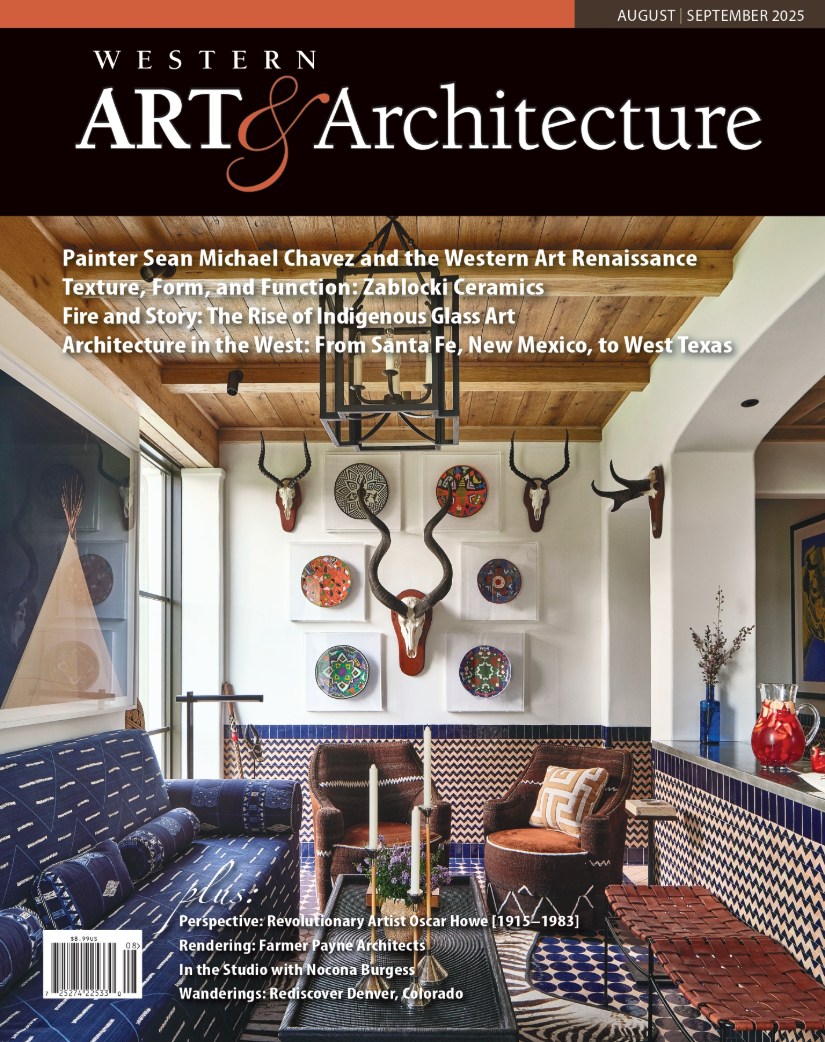
No Comments